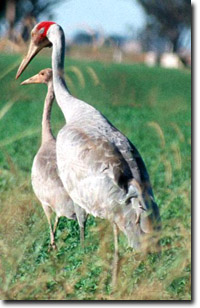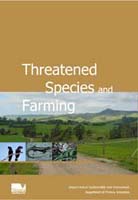Brolga
| (Grus rubicunda) Management of breeding wetlands in the Goulburn-Broken catchment and North-east Victoria Conservation Status Nationally vulnerable to extinction Location North-East Region Victorian Riverina Bioregion Rutherglen, Yarrawonga, Katamatite, Dookie, Tungamah Agricultural Industries Meat, Cropping, Dairy What is the problem
|  Brolga (Photo: Matt Herring) |
What are the solutions
What farmers said “The topography of the land made it the perfect site for an irrigation recycle dam. So we put a bank around it and that’s what it became. A bit of water went into it and about five million birds turned up, including a pair of Brolgas.” | To view the information PDF requires the use of a PDF reader. This can be installed for free from the Adobe website (external link). |



